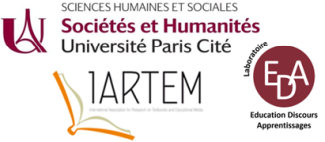RESEARCH PROBLEM
Textbooks have been used in education throughout the ages to integrate discipline knowledge and develop students' learning outcomes. Textbooks traditionally offered structure of the content and acted as an organizer for subjects (Knight, 2015; Knight & Galletly, 2021), described by Bruillard (2021) as the main instrument used in schools. Students have been encouraged to use these textbooks as authoritative sources to develop an understanding of the principles relevant to a discipline (Knight & Horsley, 2013).
The 21st century has seen a marked shift in the potential use of digital technology, characterized by an era of a shift to openness to access information. Today students can use learning tools to network with an overwhelming amount of information whereby they determine the relevance of information to the task at hand, make connections, and use their personal agency to locate, evaluate and create information (Fasso, Knight, & Knight, 2015).
This presentation reports the results of an investigation into secondary teachers' use of etextbooks and digital resources in the digital age in 2024. The research explores teachers' experiences and preferences on the use of etextbooks and digital resources in their classrooms, types of electronic devices used, selection criteria of etextbooks, adaptations necessary, central uses, useful features, impacts on student learning outcomes and student engagement, and challenges encountered in incorporating electronic textbooks into their practice.
METHODOLOGY
This pilot study uses a methodological frame of interpretative ethnography. The data gathering will be completed by exploratory interviews with secondary discipline teachers who are directly responsible for the provision of teaching and learning resources to support student development. The questions for the interviews were generated from the literature to elicit aspects about the resources used to support their teaching. Individual responses will be aggregated, analysed and presented as themes emerging from the data.
PRELIMINARY RESULTS
There are no preliminary results yet as the research is in progress being conducted from January to April, 2024. Very early and preliminary findings suggest the use of second generation etextbooks is common as a result of the need to cement declarative knowledge of the discipline
REFERENCES
Bruillard, E. (2021). Textbooks and educational resources: overview of contemporary research. IARTEM e-journal, 13(1).
Fasso, W., Knight, B.A. & Knight, C. (2015). Development of individual agency within a collaborative, creative learning community. In M. Khosrow-Pour (Ed), Encyclopedia of Information Science and Technology, Third Edition (pp 7519-7528). IGI Global Press, Hershey, PA.
Knight, B.A. (2015). “Teachers' use of textbooks in the digital age”. Cogent Education, 2(1),
10pp. DOI: 10.1080/2331186X.2015.1015812
Knight, B.A. & Galletly, S. (2021). The shifting landscape of text and how it is comprehended. In P. Bagoly-Simo & Z. Sikorova. Textbooks and Educational Media: Perspectives from Subject Education (pp. 47-58). Springer: New York
Knight, B.A. & Horsley, M. (2013). “The ecology of change and continuity in the use of textbooks in higher education”. Text, 23 (6), October, 13pp
http://www.textjournal.com.au/speciss/issue23/content.htm
- Poster

 PDF version
PDF version

